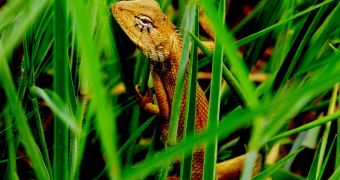While governments are engaged in efforts to mislead the public into believing they are actually trying to mitigate the effects of global warming and climate change, predictions and computer models paint a bleak future ahead. Given the current amounts of the dangerous greenhouse gas carbon dioxide (CO2) that are being emitted worldwide, scientists say that numerous animal species are bound for extinction. A serious example of this is lizards. New simulations show that about 20 percent of all lizards on Earth will be killed off by the rising temperatures within 40 years. This equates to no less than 6 percent of all lizard species disappearing completely, Nature News reports.
It's also interesting to note that these numbers are not based on the most optimistic predictions about global warming, as in the cases where the amounts of CO2 being emitted yearly do not increase very fast. The best-case scenarios, researchers say, place the extinction date for one in five lizards around 2080, under the condition that CO2 output is reduced. New models also determined that, if modern-day emission rates continued at their current pace, then 39 percent of all lizards, or 20 percent of all species, could go extinct within 70 years.
The finding is extremely worrying not only through the large numbers involved, but also because these creatures should theoretically be a lot more adapted to enduring shifting temperature levels. “Lizards are animals that should be very tolerant of climate warming,” explains University of Washington in Seattle evolutionary physiologist Raymond Huey. “It's happening really, really fast. We're seeing a massive extinction wave sweeping across the planet,” adds University of California in Santa Cruz (UCSC) evolutionary biologist Barry Sinervo, who was the leader of the investigation.
The issue that affects lizards most is not necessarily a higher temperature average at midday, or during the summer season, but rather the fact that the springs are getting warmer. When this happens, the creatures spend a lot of time in the shade, and less time outside, looking for food. The same type of behavior was also found to be taking place during the mating season as well, which means that lower numbers of lizards will be produced for the following year. Over time, the trend would reduce the overall populations considerably, researches warn.

 14 DAY TRIAL //
14 DAY TRIAL //